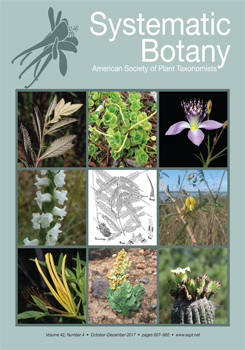A new species was collected during a fern expedition in the Nuluhon Trusmadi Forest Reserve, Sabah, Borneo. Morphologically, it is similar to both Pteris decrescens Christ and P. parviloba Christ but can be distinguished by frond characters. Specifically, the new species differs from the other two species by having basiscopic secondary pinnae (vs. without basiscopic secondary pinnae), petiolulate pinnae (vs. sessile pinnae), without bristles on the stipes (vs. with bristles on the stipes), a crenate margin of the pinna-segment apex (vs. a serrate apex), and entire pseudoindusia (vs. ciliate pseudoindusia). Furthermore, P. decrescens and P. parviloba differ in the number of lateral pinnae (5 or 6 vs. 8–16 pairs) and the length of the basal pinna-segments being shortest or longest of all lateral pinnae. Two plastid genes, rbcL and matK, were used to decipher their phylogenetic relationships. The new species was resolved in different clades from P. decrescens and P. parviloba, providing further support of its uniqueness. The morphology, illustrations, ecology, and distribution of the new species are provided. We also found that the type materials of P. decrescens included two different species, P. decrescens and P. parviloba.A lectotype of P. decrescens was therefore designated. Based on the results of this study, P. decrescens and P. parviloba are re-circumscribed, and the new species is described as P. borneensis sp. nov.
BioOne.org will be down briefly for maintenance on 17 December 2024 between 18:00-22:00 Pacific Time US. We apologize for any inconvenience.
How to translate text using browser tools
27 December 2017
Pteris borneensis (Pteridaceae), a New Species from Borneo, with Re-Circumscription of Pteris decrescens and Pteris Parviloba
Yi-Shan Chao,
Andi Maryani A. Mustapeng,
Cheng-Wei Chen,
Wen-Liang Chiou
ACCESS THE FULL ARTICLE

Systematic Botany
Vol. 42 • No. 4
December 2017
Vol. 42 • No. 4
December 2017
lectotype
phylogeny
spore
taxonomy




